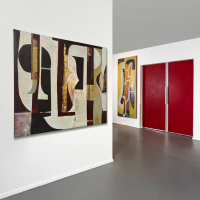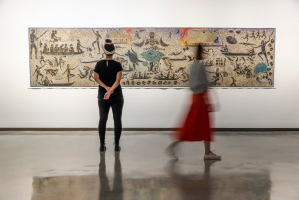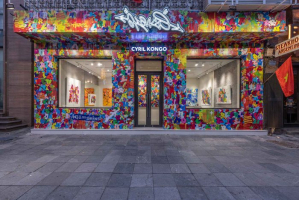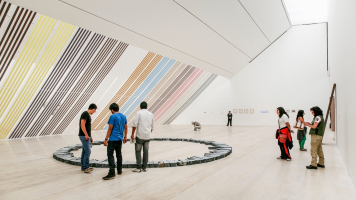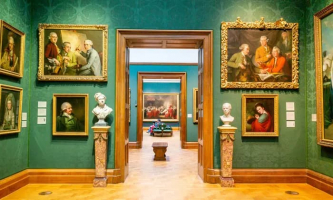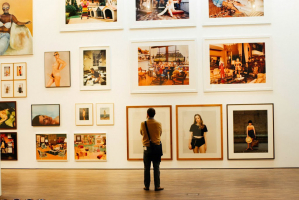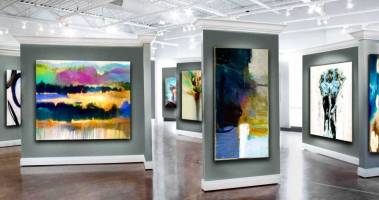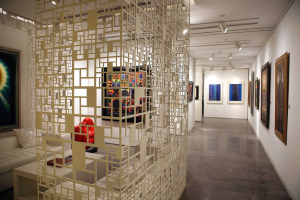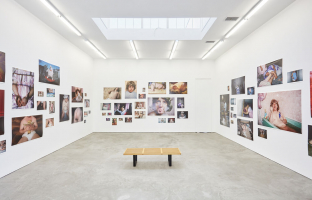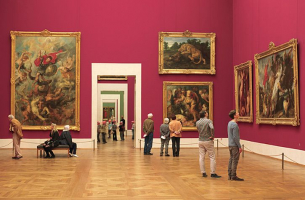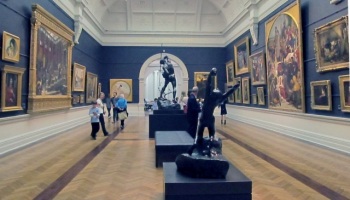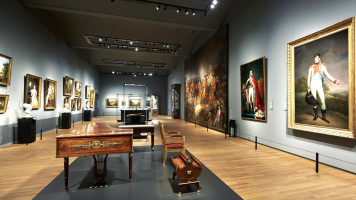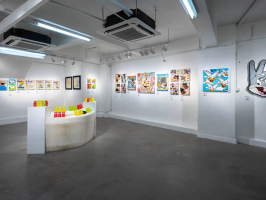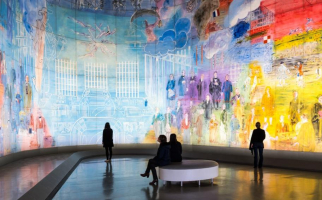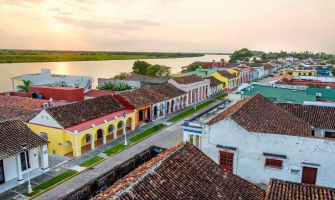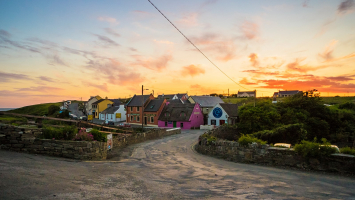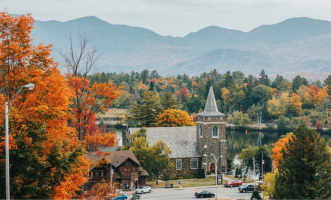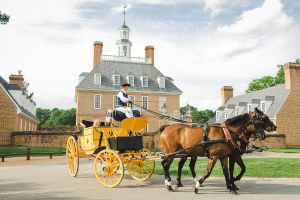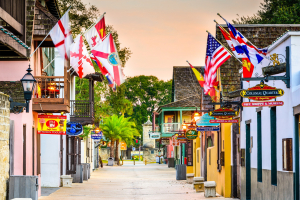Top 14 Best Art Galleries to Visit in Paris
Paris was the unquestioned art hub of the Western world for centuries. Many pioneering, perspective-altering artists have resided in Paris throughout the years ... read more...– Van Gogh, Picasso, Monet, Dale, and many others – and much of their work may be discovered in the city's vast array of museums, galleries, attractions, salons, and other arts venues. Here are the top best art galleries in Paris if you're looking for venues to see art.
-
With an amazing, 8.8 million visitors in 2011, the world's largest museum are also its most frequented. It's a multi-level maze of galleries, corridors, staircases, and escalators that's a city within a city. It's famed for the artistic treasures it houses, but the museum's basic structure is a masterpiece in and of itself - or rather, a collection of masterpieces that have been updated and added to over the centuries.
The additions and changes continue to this day, with the introduction of a significant new Islamic Arts section in 2012 and the franchising of the Louvre's 'brand' via new outposts in Lens and Abu Dhabi. This is the site that most exemplifies the centrality of culture in French life.
There are around 35,000 items of art and antiquities on display, which are divided into eight sections and housed in three wings: Denon, Sully, and Richelieu. Each wing of the glass pyramid has its own entrance beneath the atrium, though you can walk from one to the other. Egyptian, Etruscan, Greek, and Roman art, as well as Middle Eastern and Islamic art, have their own galleries in the Denon and Sully wings. The first level of Richelieu is dedicated to European ornamental arts from the Middle Ages to the nineteenth century, including numerous rooms from Napoleon III's opulent palaces.
Art and sculpture, however, are the main attractions. On the ground floor of Richelieu, two glass-roofed sculpture courts house the famed Marly horses, with French sculpture below and Italian Renaissance sculptures in the Denon wing. Like a mini-Uffizi, the Grande Galerie and Salle de la Joconde (home to the Mona Lisa) stretch the length of Denon's first floor, flanked by French Romantic paintings. The second floor of Richelieu and Sully is devoted to Dutch and French painting. The Denon wing's minimalist galleries, which feature art from Africa, the Americas, and Oceania, were created as a sample for the Musée du Quai Branly.
Location: Rue de Rivoli, Paris, Île-de-France 75001
Website: https://www.louvre.fr/en
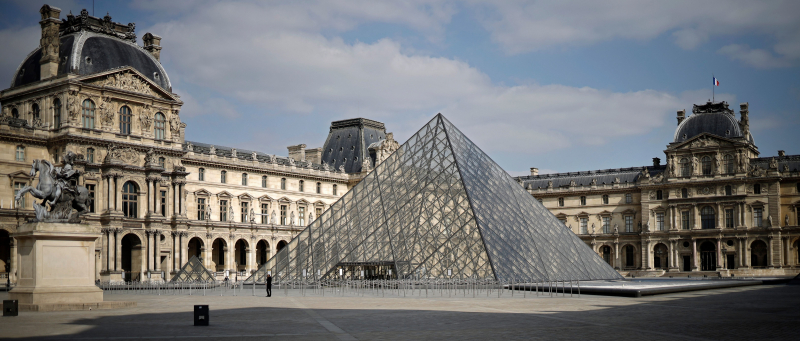
The Louvre 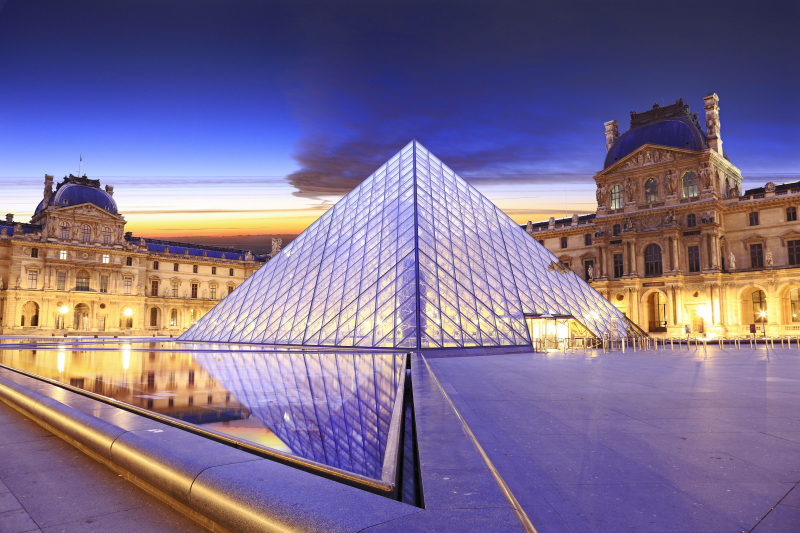
The Louvre -
Perrotin, who is now based in an attractive Marais hôtel particulier, is one of the city's sharpest figures: in addition to owning a Miami gallery and a glossy magazine, he has just gone on the design bandwagon with shows by Robert Stadler and Eric Benqué. He also includes the radical Austrian collective Gelitin, as well as the wacky Japanese set of Takashi Murakami, Mariko Mori, and others, as well as famous French figures like Sophie Calle, Xavier Veilhan, Prix Marcel Duchamp winner Tatiana Trouvé, and Bernard Frize.
The main gallery in Paris is a massive white-walled space that has previously welcomed some of the most well-known artists, including Sophie Calle, Maurizio Cattelan, Takashi Murakami, Wim Delvoye, and Paola Pivi. Every year, there are 12 art shows involving emerging artists as well as established figures in the contemporary art world. If you enjoy art, a visit to Galerie Perrotin is a must when visiting Paris. This gallery, which represents more than 50 artists, is undoubtedly one of the most prominent names in the Parisian art scene, if not the entire globe.
In recent years, the gallery has broadened its goal by producing thoughtful editorial content, such as podcasts and videos, as well as building a programmed schedule that includes panel discussions, children's education workshops, and concerts. Catalogs, publications, and other goods are also available in the gallery's bookstores.
Location: 76 Rue de Turenne 75003, 75003 Paris
Website: https://www.perrotin.com
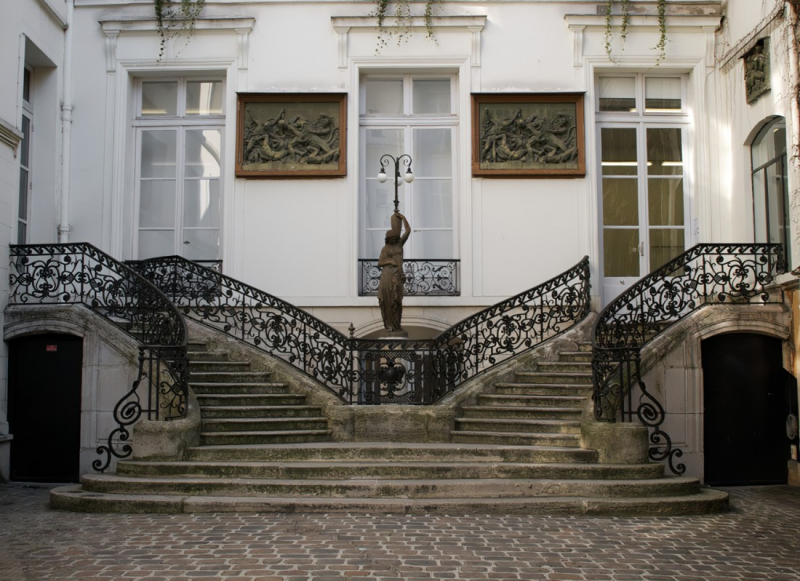
Galerie Emmanuel Perrotin 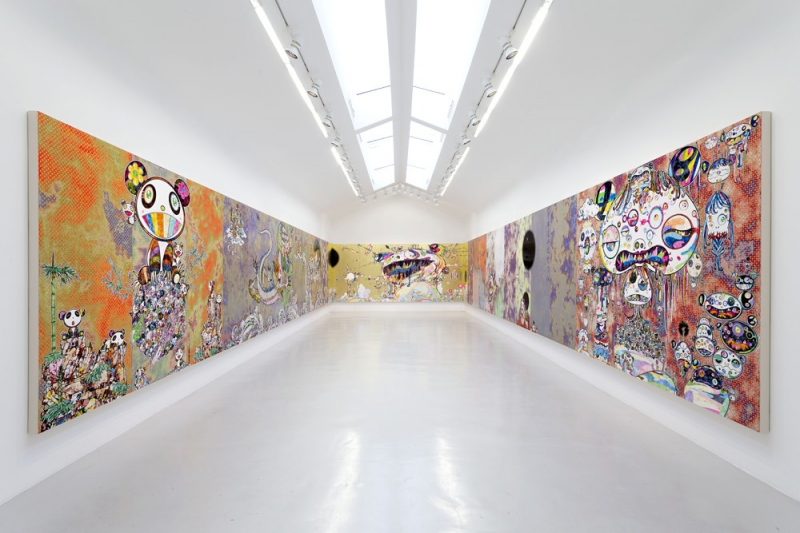
Galerie Emmanuel Perrotin -
The Musée d'Orsay's days were numbered in 1973, as they planned to demolish Victor Laloux's former train station and its colossal clocks in order to build an ultra-modern luxury hotel on the Seine's banks. Fortunately, the museum's history and significance won out, and on December 1, 1986, the newly renovated Musée d'Orsay was inaugurated.
After years of construction, the museum reopened its two most important rooms in October 2011. Courbet and Van Gogh have their own chambers, as does art nouveau, which is a first for the museum. Even the excellent coffee shop/café buried behind the clock (built by the Campana brothers) is submarine themed, in homage to Jules Verne's Nautilus, and has just been refreshed.
Approximately 3,000 works of art are on display at any given moment at the Musée d'Orsay. Within the museum, a 1:100 scale replica of the Paris Opera and the surrounding area built by Richard Peduzzi is encased beneath glass flooring that visitors walk on as they progress through the exhibition. This artwork allows visitors to understand the city planning of Paris during the period, making it one of the museum's most popular attractions.
Location: 1 rue de Bellechasse, 7e Paris
Website: https://www.musee-orsay.fr
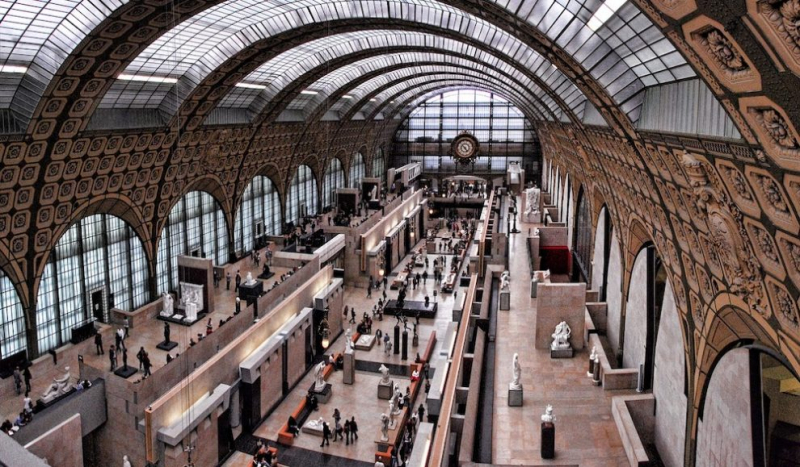
Musée d'Orsay 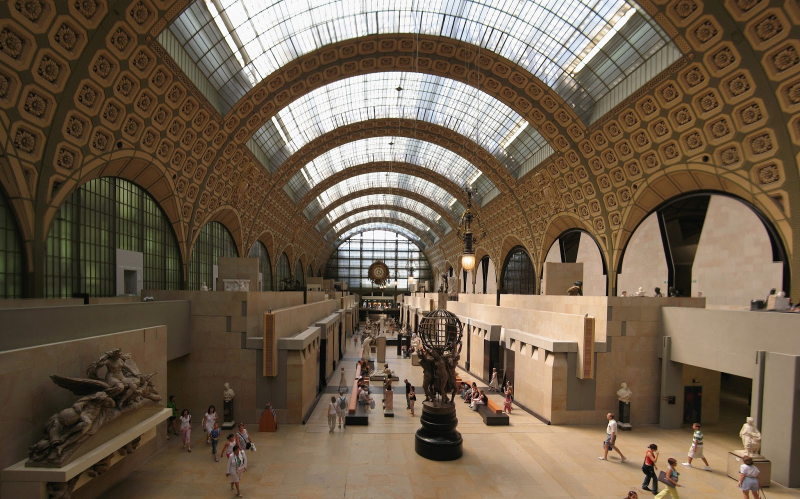
Musée d'Orsay -
The Centre Pompidou is one of Paris' most well-known landmarks, thanks to its bright colors, exposed pipes, and air ducts. Renzo Piano and Richard Rogers, a then-unknown Italo-British architectural pair, won the competition with their 'inside-out' boilerhouse design, which placed air-conditioning, pipes, lifts, and escalators on the outside while leaving an adjustable space inside. The multidisciplinary concept of a modern art museum (Europe's largest), library, exhibition and performance venues, and repertory cinema was equally groundbreaking.
When the center first opened in 1977, it was a huge success. The centre reopened in 2000 after a two-year renovation, with an expanded museum, new performance spaces, a vista-rich Georges restaurant, and a mission to return to the exciting interdisciplinary mix of the past. The forum is free to enter (as is the library, which has its own entrance), but you must now pay to use the escalators.
Purchase tickets on the ground floor for the main collection and escalators to level four for post-1960s art. Level five covers the years 1905 to 1960. On each of these two levels, there are four temporary exhibition spaces (included in the ticket). The main temporary exhibitions are held on the ground floor, in gallery two on level six, in the south gallery on level one, and in the new Espace 315, which is dedicated to artists under the age of forty.
Location: Place Georges Pompidou, Paris, IdF 75004
Website: https://www.centrepompidou.fr/en
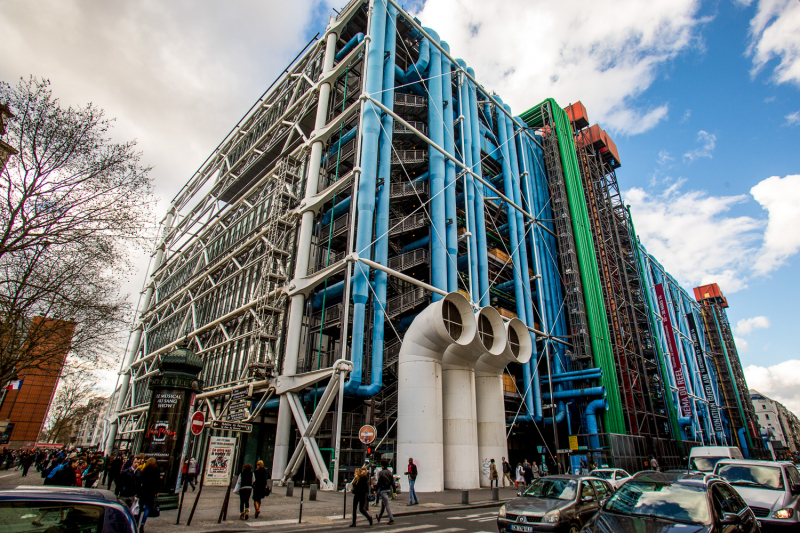
The Centre Pompidou 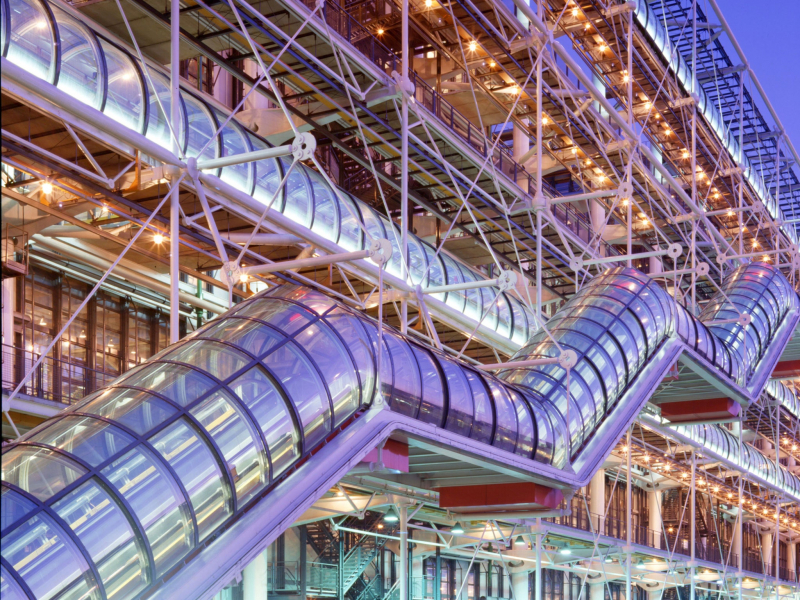
The Centre Pompidou -
Many people believed the Palais' minimalist interior was a design statement when it first opened in 2002. In truth, it was a result of financial constraints. The 1937 structure has evolved into an open-plan venue with a skylit center hall that hosts exhibitions and events. Extended hours and a hip café have attracted a younger crowd, and the roster of performers is remarkable (Pierre Joseph, Wang Du and others). The name is a throwback to the 1937 Exposition Internationale, but it also serves as a reminder of ties to a new generation of Far Eastern artists.
From 7000 to 22,000 square meters, the gallery has expanded. Lacaton & Vassal elected to stick to their original restoration, which left everything in its natural state — material honesty. As a result, when they broke into an underused basement, the relics of the breaking-in process were celebrated and left exposed, rather than plastered up. The building elements are allowed to age naturally, adding to the patina of a structure that has existed for over a century, free of the normal clean-room atmospheres of other museums. Though the lower basement layers have a tomb-like feel to them, the upper levels are bathed in sunlight through glass roofs.
Another intriguing feature of the museum is its lack of pre-determined pathways, which are common in other galleries. The visitor to Palais is allowed to roam and explore the building's below-ground grotto and upper-level display areas without restriction. The rawness of the materials, juxtaposed with the minimal imposition of technology, such as strip lights screwed into existing brick or exposed cables flowing through the galleries, maybe what distinguishes Palais de Tokyo from its sibling museums.
Location: 13 Avenue du Président Wilson, Paris, IdF 75116
Website: https://palaisdetokyo.com
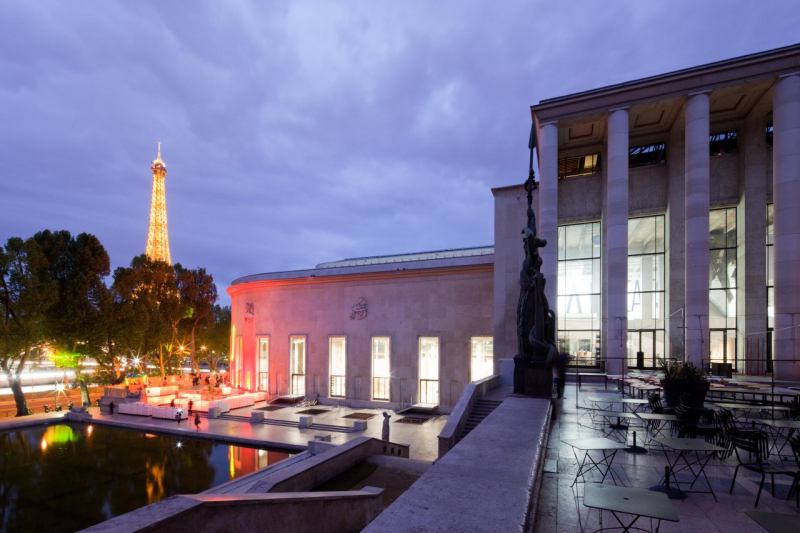
Palais de Tokyo 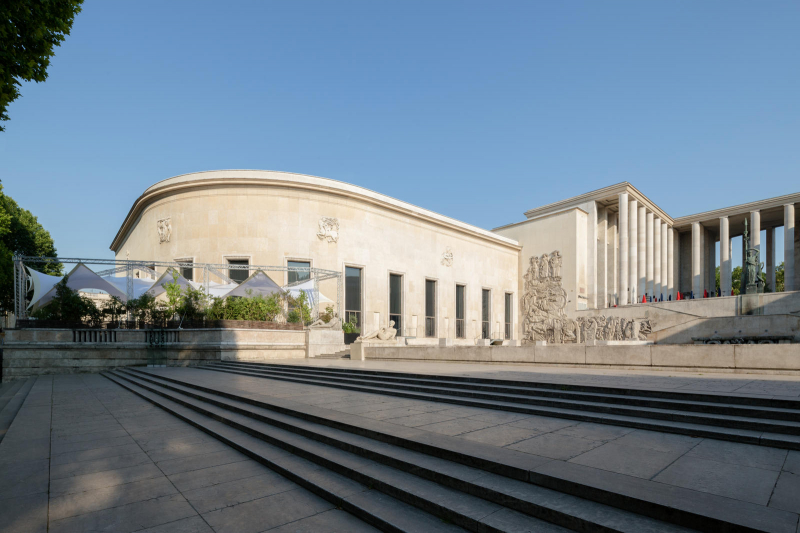
Palais de Tokyo -
Visitors are greeted by long terrace stairs and a pair of stone lions as they enter this stately 19th-century palace, which houses a collection of great paintings and objets d'art. Edouard André and his artist wife Nélie Jacquemart put together the collection using money he inherited from his wealthy banking family. The palace was custom-built to accommodate their art collection, which includes Rembrandts, Tiepolo frescoes, and works by Uccello, Mantegna, and Carpaccio.
The Jacquemart-André Museum houses a rich collection of French and European paintings, sculptures, art objects, and furniture. There are works by notable artists like Sandro Botticelli and Rembrandt on display. The Jacquemart-André Museum offers numerous temporary exhibitions each year in addition to its permanent holdings. Two or three are held each year, and they usually focus on a single artist in order to learn more about his work and technique.
The Jacquemart-André Museum is not simply a venue for exhibitions; it also serves as a concert venue for performers. You may get tickets to any of these concerts right here on this page. At the bottom of the page, you'll also discover the Jacquemart-André Museum's concert schedule.
Location: 158 Boulevard Haussmann, Paris, IdF 7500
Website: https://www.musee-jacquemart-andre.com
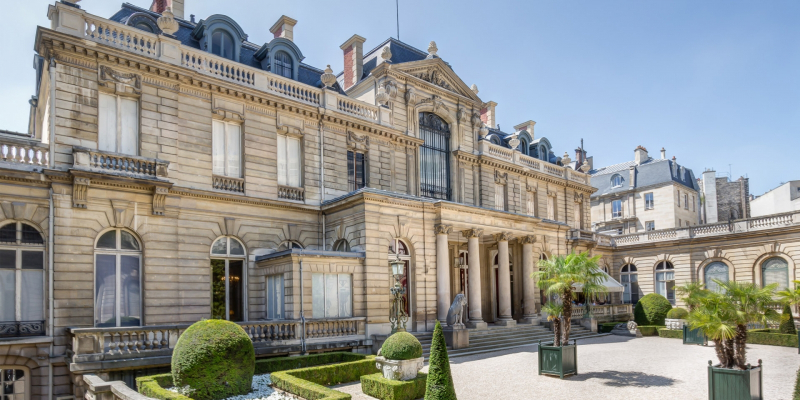
Musée Jacquemart-André 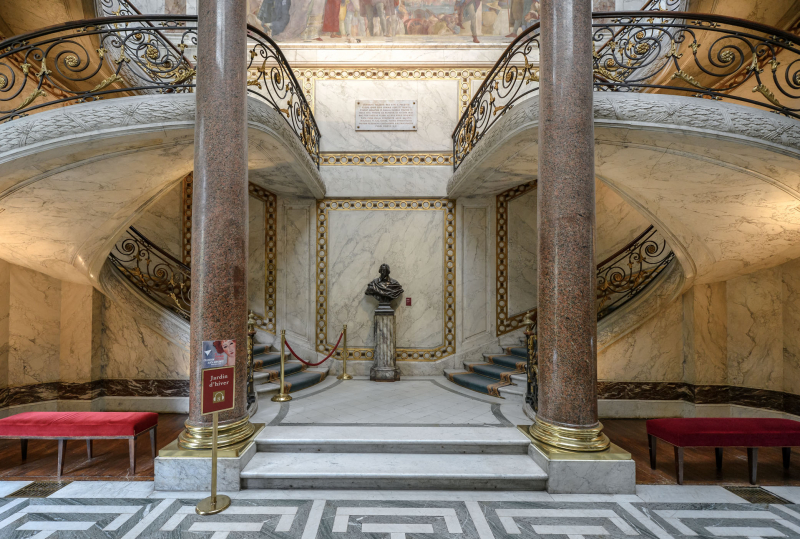
Musée Jacquemart-André -
This old hunting pavilion, which was originally a museum of the Empire period left to the state by collector Paul Marmottan, has become a well-known holder of Impressionist art thanks to two bequests: the first by the daughter of the doctor of Manet, Monet, Pissarro, Sisley, and Renoir, and the second by Monet's son Michel. It has the world's largest Monet collection, with 165 pieces, as well as sketchbooks, palettes, and photographs. The spectacular late water lily canvases are housed in a distinctive circular room; upstairs are works by Renoir, Manet, Gauguin, Caillebotte, and Berthe Morisot, as well as 15th-century primitives, a Sèvres clock, and a collection of First Empire furniture.
With two important contributions, the museum's collection began to alter, despite its origins as a showcase for First Empire art. Victorine Donop de Monchy donated an important collection of Impressionist paintings to the museum in 1957, which had belonged to her father, Doctor Georges de Bellio, who was a physician to Manet, Monet, Pissarro, Sisley, and Renoir, as well as an early supporter of the Impressionist movement.
In 1966, Claude Monet's second son, Michel Monet, donated his father's paintings to the museum, resulting in the world's biggest collection of Monet paintings. The museum received a major collection of Impressionist and Post-Impressionist works (including several Monets) from Nelly Duhem, the painter Henri Duhem's adopted daughter, in 1985.
Berthe Morisot, Edgar Degas, Édouard Manet, Alfred Sisley, Camille Pissarro, Paul Gauguin, Paul Signac, Pierre-Auguste Renoir, and others are among the artists represented at the museum. It also holds the Jules and Paul Marmottan collection of Napoleonic era art and furnishings, as well as the Wildenstein Collection of illuminated manuscripts.
Location: 2 Rue Louis Boilly, Paris, IdF 75016
Website: https://www.marmottan.fr
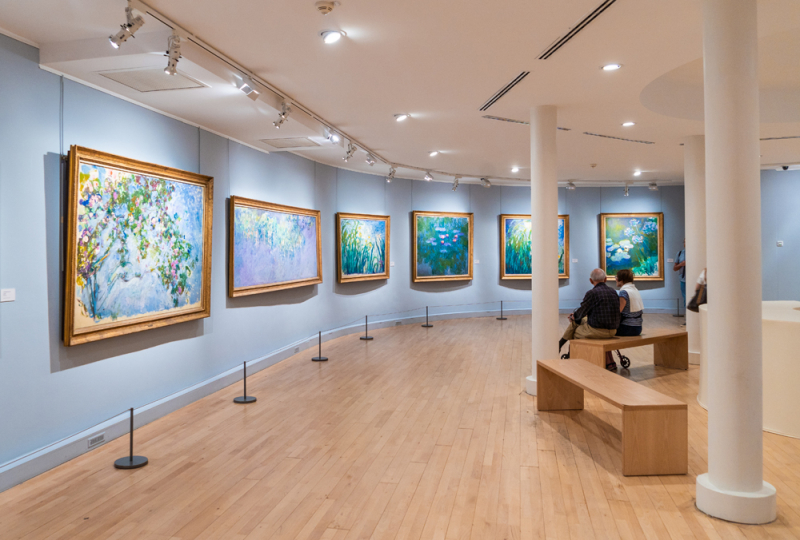
Musée Marmottan-Monet 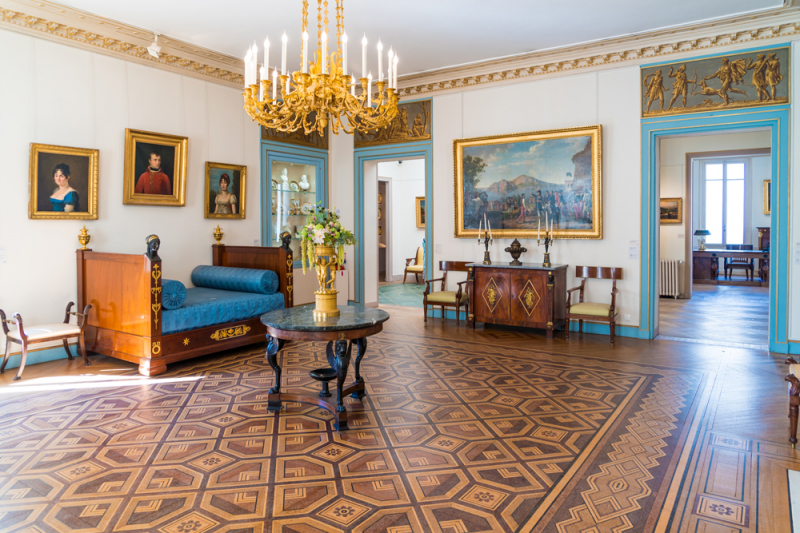
Musée Marmottan-Monet -
The Grand Palais was designed by three separate architects for the 1900 Universal Exposition, each of whom designed a façade. During WWII, it was used to store Nazi tanks. When parts of metal started coming off the spectacular glass-roofed central hall in 1994, it was closed, but shows continued in the other wings. The Palais reopened in 2005 after undergoing extensive renovations.
Because of its unique architectural design, the Galeries Nationales du Grand Palais is one of Paris' most popular attractions. It was constructed when Paris hosted the World's Fair more than a century ago. This museum is now mostly used as a gallery for modern French art.
The glass dome of the Galeries Nationales du Grand Palais contributes to the attraction of this location. After one of the glass tiles fell in 1993, the building was renovated for ten years and reopened in its entirety in 2007. Aside from French art, this magnificent structure holds a variety of temporary exhibitions, many of which are science and natural history related.Location: 3 AV du Général Eisenhower, 75008 Paris
Website: https://www.grandpalais.fr
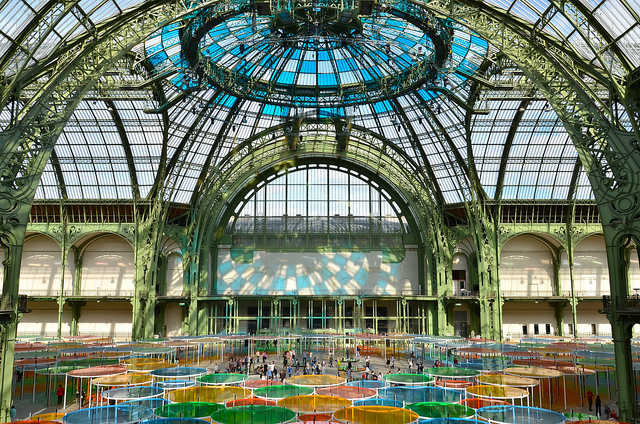
Galeries Nationales du Grand Palais 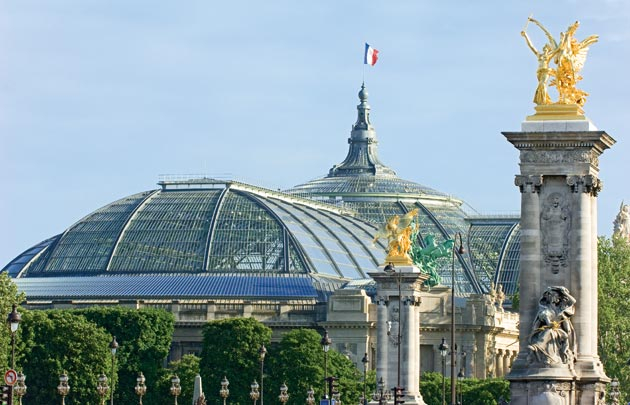
Galeries Nationales du Grand Palais -
Kamel Mennour owns and directs Galerie Kamel Mennour, a contemporary art gallery in Paris. In 1999, the first space, at 50 square meters, opened on Rue Mazarine. The gallery, dedicated to modern photography, included works by worldwide artists such as Larry Clark, Stephen Shore, and Nobuyoshi Araki, as well as more renowned artists such as Pierre Molinier. In the meanwhile, the gallery began publishing catalogs to go along with the exhibitions. Kamel Mennour Editions has now produced more than forty catalogs. The gallery acquired international recognition by participating in Paris Photo in 1999, the Foire Internationale d'Art Contemporain in 2000, and Art Basel in 2003 for the first time.
Since then, the gallery has participated in several of the world's biggest art fairs, including Art Basel, Foire Internationale d'Art Contemporain, and Art Basel Miami Beach. Daniel Buren, Claude Lévêque, François Morellet, and Martin Parr were among the first emerging contemporary artists, as well as veteran artists working in many mediums, to be featured in the gallery's programming in 2003. The gallery moved into a new 400 m2 location in the seventeenth-century Hôtel particulier de Vieuville, located at 47 rue Saint-André-des-Arts, in September 2007. It was inaugurated with a solo exhibition by Daniel Buren, which was designed by architects Aldric Beckmann and Françoise N'Thépé. The Rue Mazarine's first space displays distinct initiatives.
Location: 47 Rue Saint-Andre des Arts, 75006 Paris
Website: https://kamelmennour.com
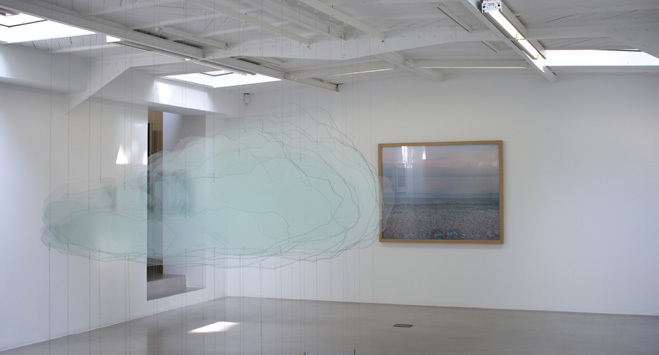
Galerie Kamel Mennour 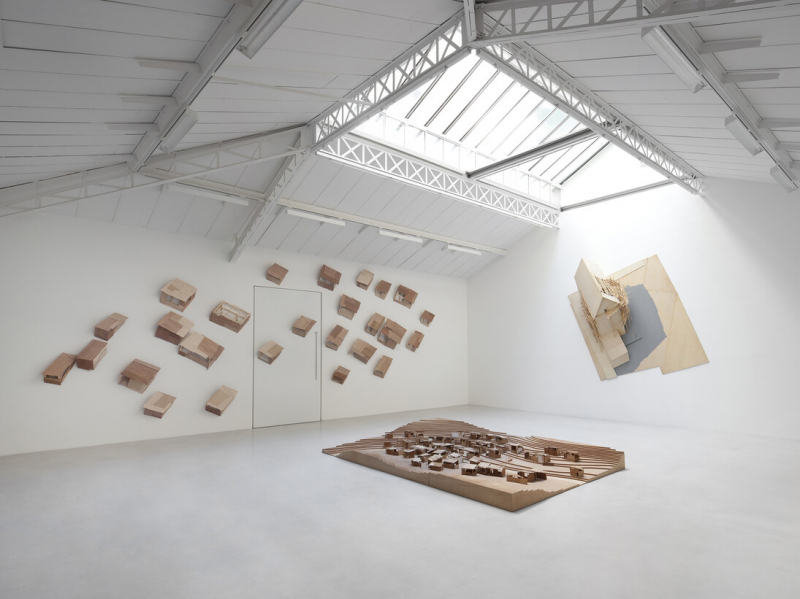
Galerie Kamel Mennour -
Cartier founded this contemporary art museum in 1984, and the famed jeweler's headquarters are still located upstairs. The galleries below, which are housed within a colossal glass and steel structure, areas well-designed as any of their counterparts. Themes such as 'Birds', 'Desert', and 'Trees' are frequently featured in mixed-media exhibitions. For the most part, it's a modern museum, and it's a slightly less-known spot to see good living artists. The museum also hosts regular events to go along with the exhibits, so check the website ahead of time to see what's going on.
The museum now has over 1500 works by over 350 artists and hosts show by contemporary and international artists. Its collections include monumental works such as The Monument to Language by James Lee Byars, Caterpillar by Wim Delvoye, Backyard by Liza Lou, La Volière (The Aviary) by Jean-Pierre Raynaud, and Everything that Rises Must Converge by Sarah Sze; works by contemporary French artists including Vincent Beaurin, Gérard Garouste, Raymond Hains, Jean-Michel Othoniel, Alain Séchas, Pierrick Sorin, Jean Giraud; and works by foreign artists including James Coleman (Ireland), Thomas Demand (Germany), Alair Gomes (Brazil), William Kentridge (South Africa), Bodys Isek Kingelez (the Congo), Guillermo Kuitca (Argentina), Yukio Nakagawa (Japan), Huang Yong Ping (China), and Damian Pettigrew (Canada).
Location: 261 Boulevard Raspail, Paris, IdF 75014
Website: https://www.fondationcartier.com
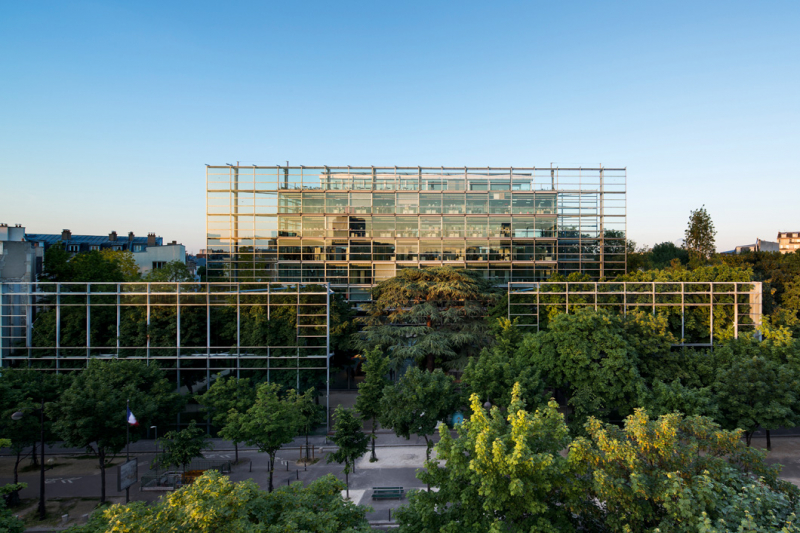
Fondation Cartier pour l'Art Contemporain 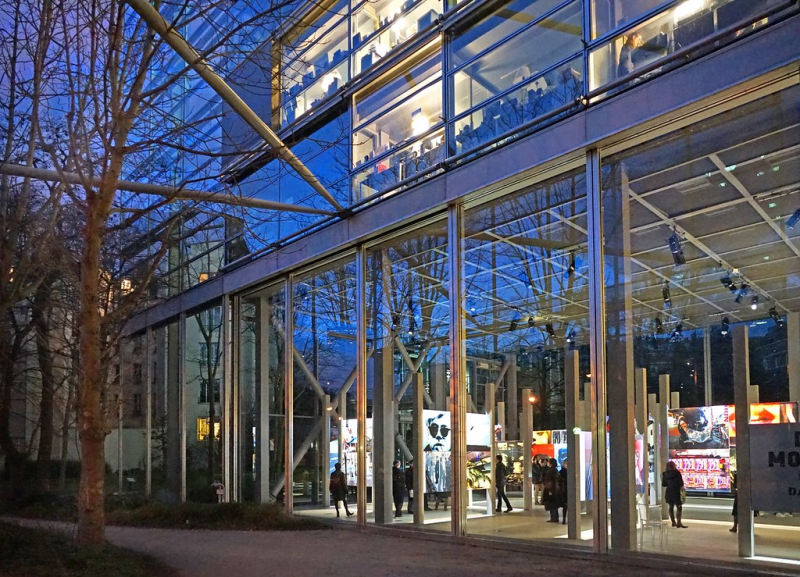
Fondation Cartier pour l'Art Contemporain -
In 2005, the Centre National de la Photographie relocated to this location in the Tuileries gardens, making it a perfect stop following a visit to the Louvre or the Orsay. The structure, which used to be a tennis court, has been partitioned into two white, hangar-like galleries. Although it is not a small venue, it is ideal for highlight retrospectives. In the basement, a video art and cinema studio displays innovative digital installation work as well as feature-length films created by artists.
There's also a chic café and a decent bookshop, so you can keep the artsy vibes going with a good book and, in true Parisian style, coffee. The museum has been closed for a long, but it will reopen on September 24, 2021, with a massive exhibition titled "Masterworks of Modern Photography 1900-1940", which will run until mid-February 2022.
Location: 1 Place de la Concorde, Paris, IdF 75008
Website: https://jeudepaume.org/en
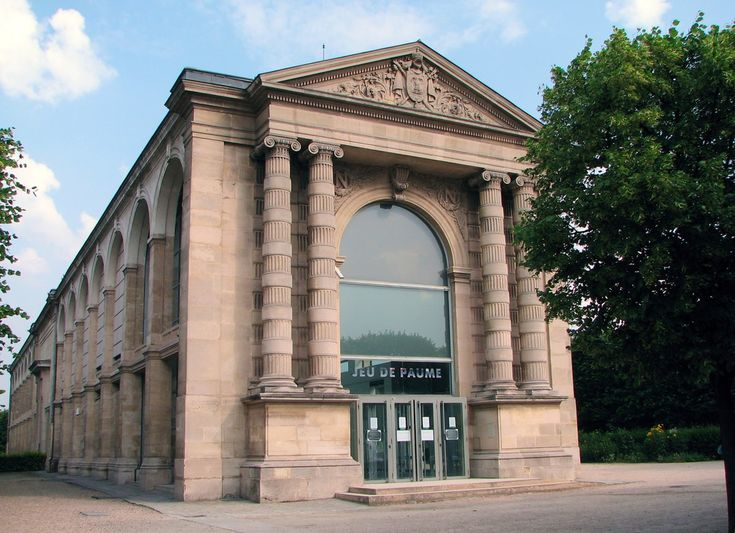
Jeu de Paume 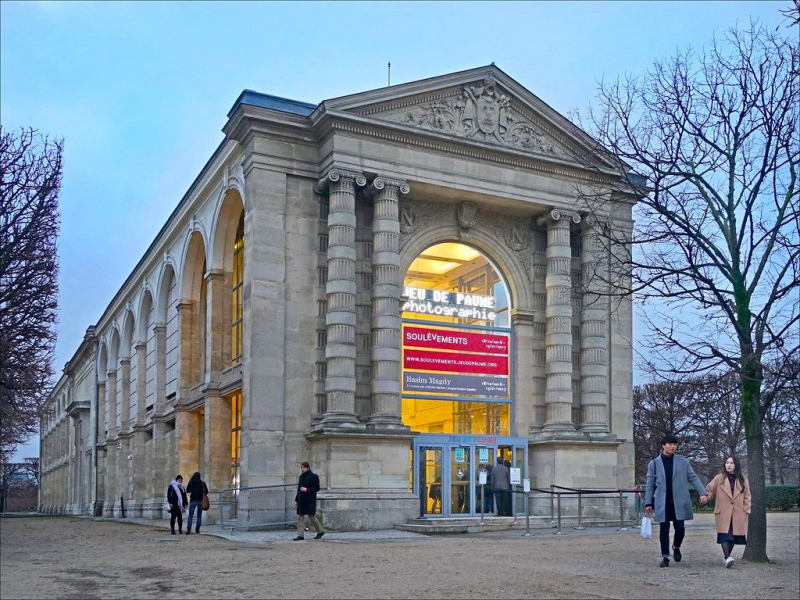
Jeu de Paume -
Galerie Daniel Templon, a Paris institution since the 1960s and conveniently located across from the Centre Pompidou, specializes in paintings — wall-friendly goods for wealthy private collectors. The list includes artists such as Jean-Michel Alberola, Gérard Garouste, Philippe Cognée, and Vincent Corpet, as well as American David Salle and German expressionist Jonathan Meese. There are a few sculptures as well. It's a fantastic place to see some of the continent's and beyond's best modern art. It's just a short walk from the Centre Georges Pompidou, where you can see even more art.
The gallery brought the big names of American art to the French public beginning in the 1970s: Dan Flavin, Ellsworth Kelly, Willem de Kooning, Frank Stella, and Andy Warhol. It immediately established itself as one of France's leading galleries for contemporary art promotion. Approximately thirty international artists are represented by the gallery now. Established contemporary artists, worldwide mid-career artists, and the experiences of new artists are all represented at the Daniel Templon Gallery. There are three exhibition spaces in the gallery: two in Paris, at 30 rue Beaubourg and 28 rue du Grenier Saint-Lazare, and one in Brussels.Location: 30 Rue Beaubourg, 75003 Paris
Website: https://www.templon.com/new/gallery.php?la=fr
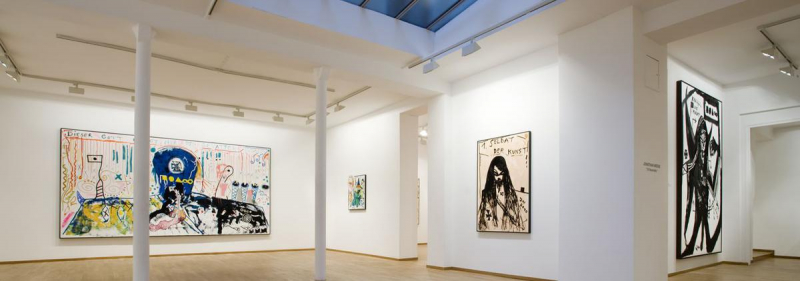
Galerie Daniel Templon 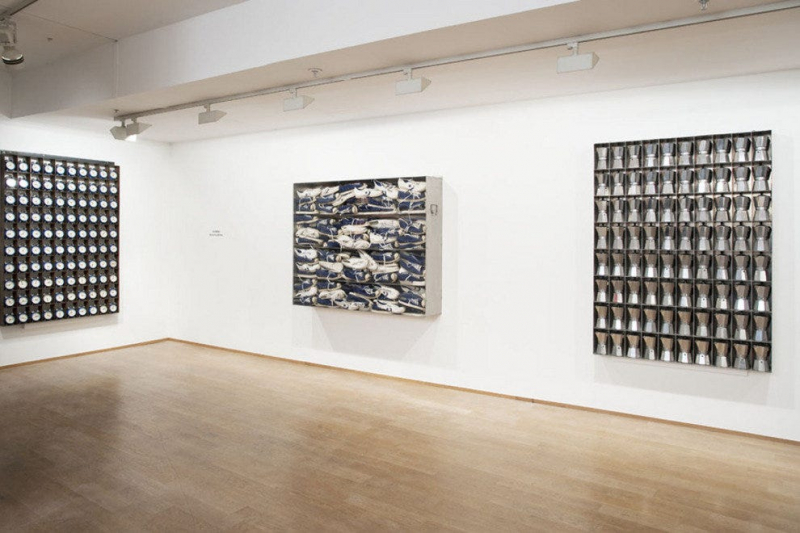
Galerie Daniel Templon -
The Musée National Rodin is housed in the hôtel particulier where the sculptor spent his final years. Many of the individual figures or small groups that appear on 'The Gates of Hell' are also on display indoors, including 'The Kiss', 'The Cathedral', 'The Walking Man', portrait busts, and early terracottas. Camille Claudel, Rodin's mistress and pupil, contributes many works to the exhibition. Paintings by van Gogh, Monet, Renoir, Carrière, and Rodin himself adorn the walls.
The gardens are the most popular among visitors; search for 'The Burghers of Calais', 'The Gates of Hell', and 'The Thinker. It's a fantastic location and has been here since 1919, it's a must-see among the great Parisian museums. If you have the opportunity, pay a visit to Rodin's former residence as well. The Villa des Brillants is located in Meudon, Hauts-de-Seine.
Location: 79 Rue de Varenne, Paris, IdF 75007
Website: https://www.musee-rodin.fr/en
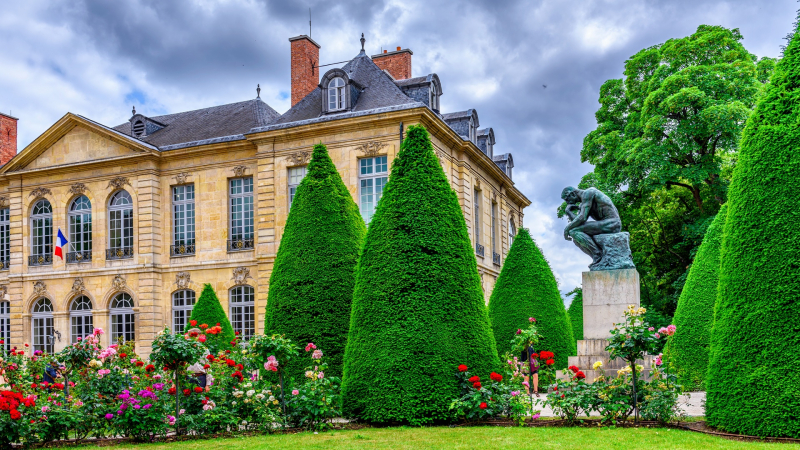
Musée National Rodin 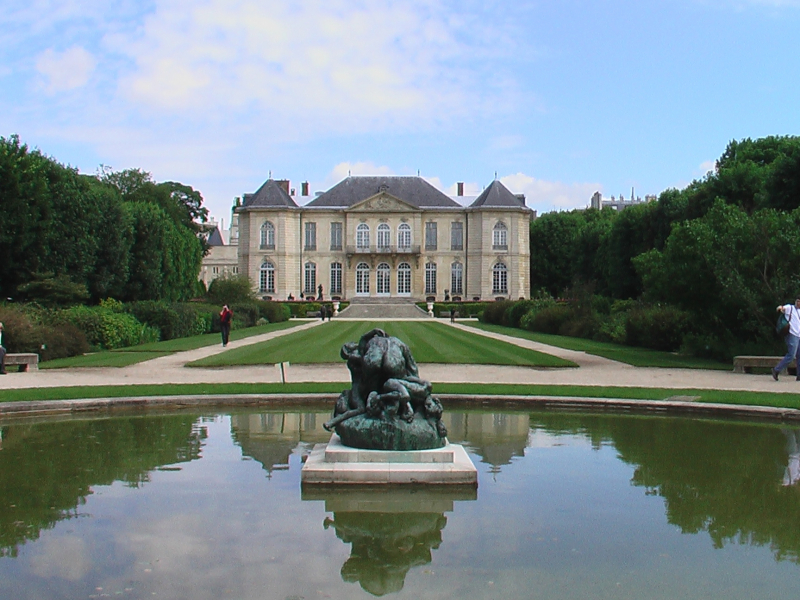
Musée National Rodin -
The Musée Bourdelle is a museum in Paris, France, located at 18, rue Antoine Bourdelle, in the 15th arrondissement, in the former workshop of French sculptor Antoine Bourdelle. Except on Mondays, the museum is open every day. The permanent collections are open to the public for free. Falguière and Montparnasse-Bienvenüe are the closest metro stations.
Antoine Bourdelle, a student of Rodin, created a number of colossal works, notably the Isadora Duncan and Nijinsky-inspired modernist relief friezes at the Théâtre des Champs-Elysées. The sculptor's previous residence and studios, which were also used by Eugène Carrière, Dalou, and Chagall, now house this museum. What an energizing space. The progress of Bourdelle's equestrian monument to General Alvear in Buenos Aires, as well as his superb Hercules the Archer is traced in a 1950s addition. Bronzes, including numerous studies of Beethoven in various guises, are housed in a new wing designed by Christian de Portzamparc. You may look at the permanent collection for free (which includes most of the better portions, to be honest) — no euros required!
Location: 18 Rue Antoine Bourdelle, Paris, IdF 75015
Website: https://www.bourdelle.paris.fr
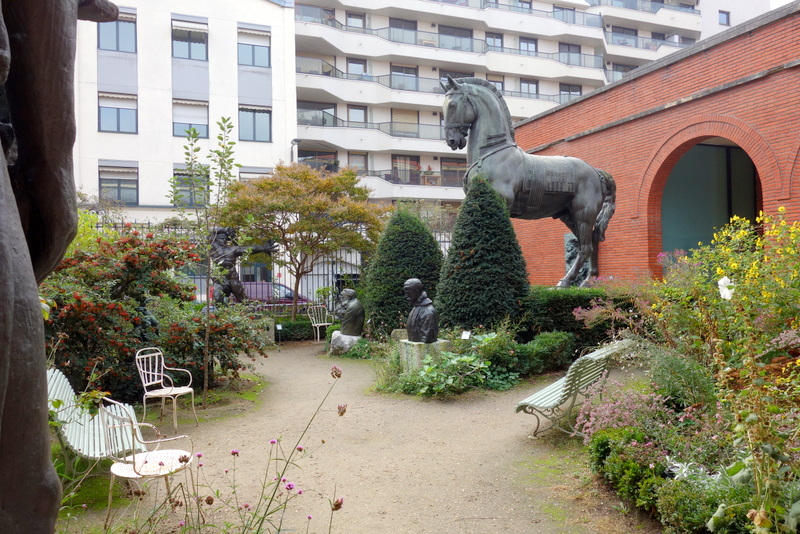
Musée Bourdelle 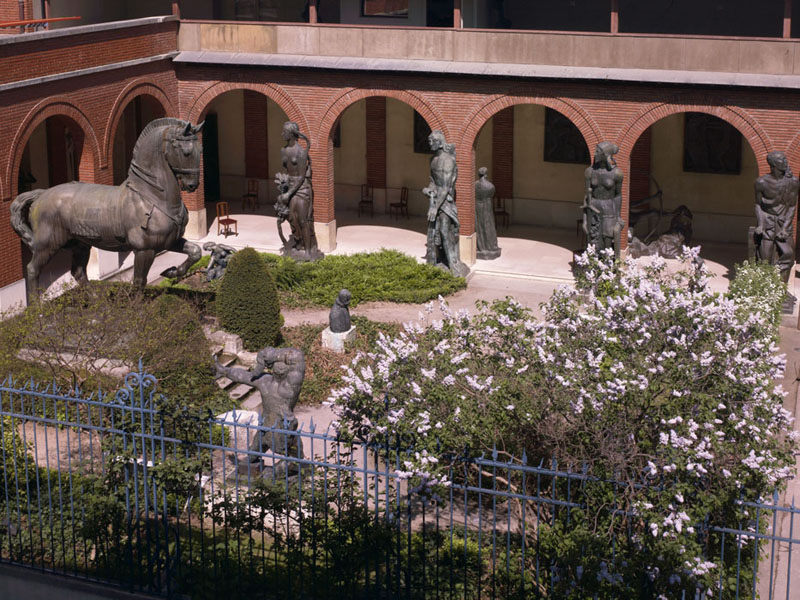
Musée Bourdelle
















